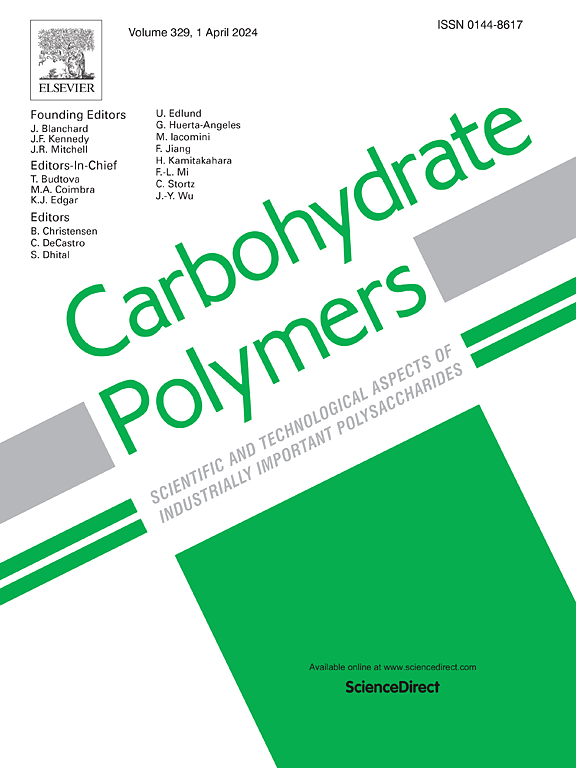Multifunctional hydrogel dressing composed of trichosanthes polysaccharide and carboxymethyl chitosan accelerates cachectic wound healing and reduces scar hyperplasia
IF 10.7
1区 化学
Q1 CHEMISTRY, APPLIED
引用次数: 0
Abstract
Cancer cachexia affects up to 80 % of advanced cancer patients and contributes to significant mortality. Impaired wound healing in cachectic patients limits physical activity, leads to nutrient loss, and increases infection risk. This study develops multifunctional hydrogels composed of oxidized polysaccharides (TPS) from Radix Trichosanthis and carboxymethyl chitosan (termed CMOT) to enhance wound healing and mitigate scar hyperplasia. TPS, characterized by its immunomodulatory properties, was oxidized to create aldehyde derivatives (oTPS1 and oTPS2) with varying oxidation levels and crosslinked with carboxymethyl chitosan through Schiff base reactions to form hydrogels (CMOT1 and CMOT2). It indicates the ability to tailor the rheological and mechanical properties of CMOT hydrogels through controlled oxidation and cross-linking. These hydrogels exhibited excellent self-healing properties, biocompatibility, and immunoregulatory effects on macrophages and T lymphocytes. Notably, CMOT2 hydrogel, with higher aldehyde content, exhibited superior mechanical properties, enhanced water retention, and slower degradation than CMOT1, consequently, accelerating wound healing in cancer cachexia conditions and reducing scar hyperplasia. The therapeutic mechanisms were associated with promoting angiogenesis, collagen synthesis, and epithelial repair, while down-regulating En-1. It not only addresses the challenges of wound healing in cancer cachexia but also offers a potential therapeutic strategy for scar hyperplasia inhibition.

求助全文
约1分钟内获得全文
求助全文
来源期刊

Carbohydrate Polymers
化学-高分子科学
CiteScore
22.40
自引率
8.00%
发文量
1286
审稿时长
47 days
期刊介绍:
Carbohydrate Polymers stands as a prominent journal in the glycoscience field, dedicated to exploring and harnessing the potential of polysaccharides with applications spanning bioenergy, bioplastics, biomaterials, biorefining, chemistry, drug delivery, food, health, nanotechnology, packaging, paper, pharmaceuticals, medicine, oil recovery, textiles, tissue engineering, wood, and various aspects of glycoscience.
The journal emphasizes the central role of well-characterized carbohydrate polymers, highlighting their significance as the primary focus rather than a peripheral topic. Each paper must prominently feature at least one named carbohydrate polymer, evident in both citation and title, with a commitment to innovative research that advances scientific knowledge.
 求助内容:
求助内容: 应助结果提醒方式:
应助结果提醒方式:


